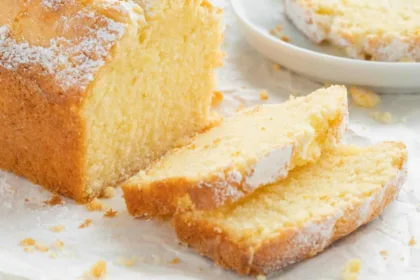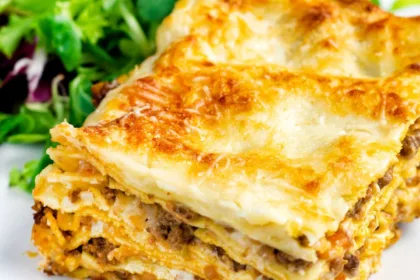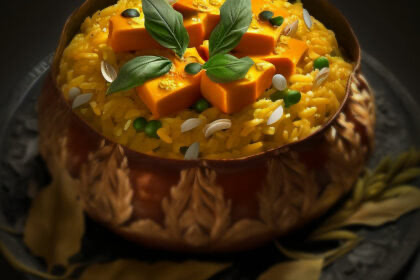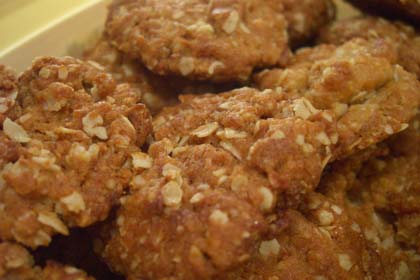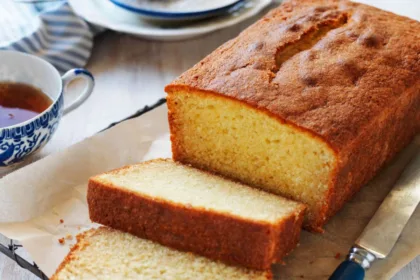
Recipes that use: Oven Tray
An oven tray, also known as a baking sheet or baking pan, is a versatile and essential tool in the kitchen allowing you to to prepare a wide variety of dishes.
Benefits of Using an Oven Tray
Here are some benefits of using an oven tray for different recipes:
- Versatility:
- Baking: Oven trays are commonly used for baking cookies, bread, cakes, and pastries. They provide an even heat distribution, helping you achieve consistent results.
- Roasting: You can roast vegetables, meats, and poultry on an oven tray. The flat surface allows for good air circulation, resulting in even browning and caramelization.
- Broiling: Oven trays are suitable for broiling fish, steaks, or other meats. The open design allows direct exposure to high heat, which is ideal for achieving a crispy exterior.
- Reheating: Oven trays are also useful for reheating leftovers or frozen foods. The large surface area makes it easy to reheat multiple items at once.
- Easy Cleanup:
- Oven trays are typically lined with parchment paper or aluminum foil, making cleanup a breeze. You can discard the lining after use, which minimizes the need for scrubbing and soaking.
- Uniform Cooking:
- Oven trays are designed to distribute heat evenly. This ensures that your food cooks consistently, reducing the risk of unevenly cooked or burnt sections.
- Drip and Grease Management:
- Many oven trays have raised edges, which help contain drippings from roasting or baking. This minimizes the risk of spills and smoke in your oven.
- Space-Saving:
- Oven trays are generally stackable, making them easy to store in your kitchen.
- Less Oil Usage:
- When roasting or baking, you can often use less oil or fat when using an oven tray compared to other cooking methods. This can make your dishes healthier.
- Easy Monitoring:
- The flat surface of an oven tray allows for easy monitoring of your food. You can quickly check for doneness and adjust cooking times as needed.
- Batch Cooking:
- You can prepare larger quantities of food on an oven tray, which is especially helpful when cooking for a crowd or meal prepping.
- Non-Stick Options:
- Many oven trays are available with non-stick coatings, making them even more convenient and easy to clean.
Keep in mind that while oven trays are versatile, the specific benefits may vary depending on the type of dish you’re preparing. For example, a rimmed baking sheet is great for roasting and containing liquids, while a non-stick cookie sheet is ideal for baking cookies. Choosing the right type of oven tray for your recipe can enhance your cooking experience and the quality of your dishes.
Types of Oven Trays
There are several types of oven trays or baking sheets available, each designed for specific cooking purposes. Here are some common types:
- Baking Sheet or Cookie Sheet:
- These are flat, rimless, and come in various sizes. They’re primarily used for baking cookies, biscuits, and other flatbreads. Baking sheets are also versatile for roasting vegetables and other flat items.
- Jelly Roll Pan:
- Similar to a baking sheet, but with a shallow rim on all sides. These are ideal for baking sheet cakes, bar cookies, or foods with some liquid, as the rim helps contain any spillage.
- Roasting Pan:
- These are deeper and often come with a roasting rack. They’re used for roasting large cuts of meat, such as turkeys or roasts, and are designed to catch drippings.
- Broiler Pan:
- Designed specifically for broiling, these pans have a slotted top section that allows fat to drain away from the food while it cooks.
- Muffin Tin or Cupcake Pan:
- These have multiple cups or molds for making muffins, cupcakes, and small individual-sized portions of baked goods.
- Pie Dish or Pie Plate:
- These are round, deep dishes with sloped sides, ideal for baking pies and quiches. They come in various sizes and materials.
- Casserole Dish:
- Casserole dishes are usually made of glass or ceramic and are used for baking casseroles, lasagnas, and other layered dishes.
- Pizza Stone:
- While not exactly a tray, a pizza stone is a flat, stone or ceramic surface that is heated in the oven to bake pizzas. It helps create a crispy crust.
- Bread Pan or Loaf Pan:
- These are rectangular or square-shaped pans with high sides, designed for baking bread or loaf-shaped cakes.
- Bundt Pan:
- A specialty cake pan with a decorative, fluted design. It’s used for baking bundt cakes.
- Springform Pan:
- A type of baking pan with a removable bottom and a latch on the side. It’s often used for making cheesecakes and tortes.
- Ramekin:
- Small, individual-sized dishes used for baking single-serving desserts like crème brûlée or soufflés.
- Sheet Pan:
- Larger than a standard baking sheet, sheet pans are commonly used in commercial kitchens. They are great for roasting large quantities of food or baking multiple items at once.
- Silicone Baking Mat:
- Not a tray, but it can be placed on a baking sheet to prevent sticking and facilitate easy removal of baked goods. It’s eco-friendly and reusable.
Each type of oven tray or baking sheet is designed for specific cooking tasks and can make a significant difference in the outcome of your dishes. The choice of tray often depends on the recipe and the type of food you’re preparing.

